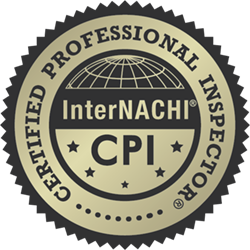If you own an older home in a coastal state, and you need to renew your homeowners insurance, your provider may request a four-point inspection. This may also happen if you’re purchasing an older house. Here is what you need to know about this process.
Difference Between a Four-Point and a Full Inspection
Don’t confuse a 4-point inspection with a full home inspection. A home inspection’s purpose is to provide a complete assessment of all the systems and components in a house.
On the other hand, a four-point inspection’s purpose is to qualify you for homeowner’s insurance. This type of inspection helps insurance companies understand whether the home’s major systems have been maintained properly.
Why Insurers Ask for a Four-Point Home Inspection
A four-point inspection is usually done in coastal states because these are areas that often experience catastrophic loss due to inclement weather. These natural disaster situations cause lawmakers to continually update local building codes. Older homes need to be inspected to find out what types of upgrades they need so they can qualify for homeowners insurance.
This type of inspection looks at the main areas that cause insurers to pay out claims. If your home fails the four-point inspection, you can make repairs to secure your policy.
What Does a 4-Point Inspection Look at?
HVAC (heating, ventilation, and air conditioning): The inspector notes whether the home has central heat and air. Is the HVAC system in good condition? Are there any signs of leaks? Every insurer uses different criteria for what they consider acceptable conditions for providing coverage. However, you can typically expect to be denied insurance if your home doesn’t have central heat and air conditioning.
Electrical system: Insurers want to know what type of wiring the home has, such as aluminum, copper, or knob-and-tube wiring. Some types of wiring are considered fire hazards. Bad wiring is a common cause of fires. Insurance companies don’t want to insure homes with faulty electrical systems.
Roof: An inspector will check your roof’s material, overall condition, and age. Most insurers won’t cover shingle roofs when they’re older than 20 years. You might also be denied coverage if a younger roof reveals leaks or other issues that require repair.
Plumbing: The type of piping is checked by your inspector. You will likely be refused coverage if your home has polybutylene plumbing, because this type is known for bursting. Another possibility is that you secure a policy, but water damage will be excluded. This means you’re going to be responsible for paying out 100% for any issues caused by water damage.
What Happens if Your Home Fails the Inspection?
If you get denied coverage after the home fails the four-point inspection, you can check with another insurance provider. Some insurers are more lenient than others. Most likely, however, you’ll need to make the necessary repairs to secure your insurance policy.
Properly Inspected Home Inspection Services provides four-point inspections to the Tampa Bay area. Contact us if you need an inspection for insurance purposes.

